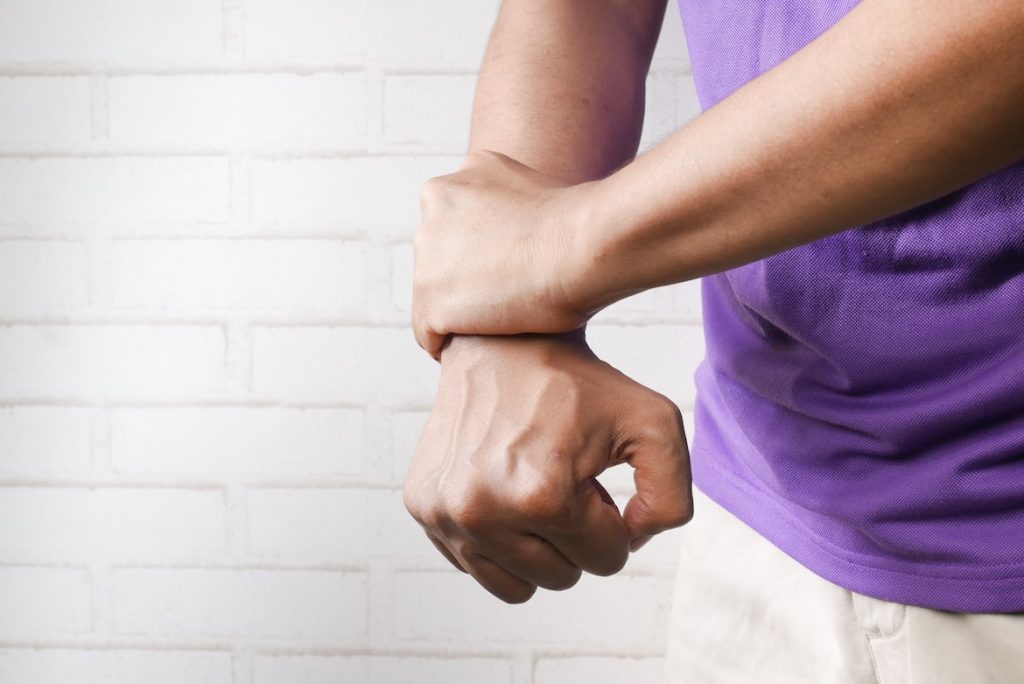
All chronic conditions come with pain, and when it comes to arthritis, repetitive tasks and even sitting down for a long time can result in extreme pain.
It is best to use office ergonomic equipment that can help you relieve pain from arthritis to have better work conditions and protect your health.
For instance, my work experience drastically improved when I took my employer’s ergonomic survey and contacted HR to discuss options on equipment that would benefit me. After evaluation and confirmation from my doctor, my employer provided an office chair, sit-stand desk, and footstool that reduced my discomfort.
A set of office ergonomic equipment is vital for all arthritis patients because it will help you to manage your symptoms better and have a good working environment.
You will agree that a good working environment makes the most stressful work bearable.
RELATED POSTS:
What is arthritis?
Arthritis means “joint inflammation” and is a collective word for chronic illnesses that affect the joints, often indicated by joint stiffness and pain. There are over a hundred different types of arthritis, but the common ones are rheumatoid arthritis and osteoarthritis.
Arthritis is said to be one of the leading causes of disability in the United States and is more common in old adults but can also be seen in children.
Types of arthritis.
There are more than 100 different types of arthritis, and they are often grouped into categories like metabolic arthritis, childhood arthritis, inflammatory arthritis, and so on. It is impossible to list all the types of arthritis, but here are some common ones:
- Rheumatoid arthritis
- Osteoarthritis
- Psoriatic arthritis
- Ankylosing spondylitis
- Lupus
- Scleroderma
- Infectious arthritis

Should someone with arthritis work?
Yes, someone with arthritis should and can be able to work but under certain conditions.
Anyone living with arthritis of any form usually experiences joint pain, swelling, and stiffness, which usually makes daily tasks harder than they are. Movement is restricted, and it takes great pain to maintain certain positions.
All these symptoms might make it impossible for arthritic patients to work. However, having good working conditions, the right job, and office ergonomic equipment can make work bearable for people with arthritis.
You will be surprised that many companies provide ergonomic devices and assistance at no cost to the employee, such as office equipment like chairs, desks, footstools, keyboards, and mice. Consult with your company’s HR department to learn what your options are. It often simply requires that your doctor complete forms confirming you need ergonomic equipment.
It doesn’t matter if you own your business or work in a large corporation; you can adjust your workspace to fit your daily needs and limitations, which will help prevent arthritis flares.
ADA and assistive devices.
The Americans with Disabilities Act (ADA) requires employers with more than 15 employees to provide reasonable accommodations for people with documented disabilities.
These accommodations involve both the tools and equipment you need while working.
However, employers are required to provide it only if it does not involve undue hardship on the employer’s part.
This means that your employer is obligated if only he can afford it.
Importance of office ergonomic equipment.
The primary importance of office ergonomic equipment is to make daily tasks easier and bearable for its user. Simple actions like using the mouse, sitting down at your desk, or turning knobs can result in severe joint pain for people with arthritis.
Here are some top benefits of using office ergonomic equipment:
It eases symptoms
Joint pain and stiffness due to prolonged positions or certain movements are reduced, providing relief and easing symptoms.
Reduces fatigue
Fatigue results from flare-ups of arthritis symptoms. When you use an ergonomic device, it reduces the symptoms and also fatigue that come with it.
Makes a happy worker
Working without feeling pain or tired quickly and meeting your daily goals or tasks make work more enjoyable, and you can end the day with happiness and fulfillment.

Office ergonomic equipment for arthritis.
Different types of office ergonomic equipment can be used to improve the working conditions of people with arthritis.
These include:
1. Ergonomic keyboard
This equipment is a necessary office ergonomic equipment because using the standard keyboard restricts the movement of your fingers within a small surface area. In contrast, ergonomic keyboards have wider space, allowing your fingers to move more easily across the keys.
Also, most ergonomic keyboards are raised in the middle and slope downward at the sides, which helps to reduce strain on the wrists and compression of nerves.
2. Keyboard tray
This equipment is necessary if the height of your desk is higher than it should be. When this is the case, resting your elbows on the table or maintaining a comfortable sitting position is difficult. You have to get a pullout keyboard tray made underneath the desk at a comfortable level, which will save space and reduce the strain you might have to put on your fingers, wrists, neck, elbows, and waist.
3. Ergonomic mouse
Most modern mice are small, and this is problematic for arthritis patients. Using a smaller mouse means you have to squeeze your fingers together to use it. A bigger mouse will mean that you can allow your hands to splay out and avoid having to press them inwards for an extended period.
You can also find some ergonomic mice with more specialized features that make working with them more bearable.
4. Door knob extenders
This prevents you from having to squeeze your fingers around door knobs, which can cause your finger joints to lock. This is a good office ergonomic tool for people with arthritis of the hands.
4. Ergonomic chair
A perfect ergonomic chair should have these features:
- Arms that allow you to rest your elbows
- A headrest that allows you to rest your head comfortably, reducing strain on your shoulders, neck muscles, and joints
- Height adjustment that allows you to adjust the height to the level of your desk easily
- Lumbar support: chairs that have a similar shape to the natural curve of the spine so that when you rest your back, it fits perfectly and is almost as if you’re lying down and not sitting

6. Footrest
You should get an adjustable footrest if you need office ergonomic equipment that helps your knee and hips.
This tool you place underneath your desk helps ensure that your feet reach the ground without extra strain—not just reaching the ground but resting firmly in a horizontal position.
7. Balance disc
A balance disc is an inflatable, round cushion that you can put on your chair, which allows your body to make tiny, constant movements. This prevents your joints from stiffening up due to being in a sitting position for too long.
It also reduces the strain on your lower back and hip joints.
8. Document/Book holder
This office ergonomic equipment allows you to attach and raise documents to your eye level. This way, you don’t have to bed your neck constantly or strain your eyes.
It relieves pain in the neck, shoulder, and upper back.
9. Adjustable desk
Make sure your desk is adjustable; the space underneath your desk should be enough for you to move your knees, thighs, and feet.
You don’t want a desk that is too high or too low.
10. Pencil grips
This ergonomic equipment is necessary if you usually use a pencil at work. It wraps around the shaft of your pencil and creates a wide grip so you don’t have to squeeze or apply as much pressure as you would typically do.
Tips for office ergonomics.
Even if you have the perfect office ergonomic equipment, there are still some things you need to note when you decide to incorporate these tools and equipment into your work life.
- Move regularly to avoid stiffening of joints.
- Always test out your ergonomic equipment before buying them.
- Maintain neutral sitting postures.
- Raise your laptop/computer.
- Keep essential tools at arm’s length.
- Listen to your body and know when to rest or take a leave.
- Use a headset instead of having to hold your phone to your ears.
- Avoid lifting big things; use hydraulic devices.

Conclusion
A set of office ergonomic equipment makes it easier to work with arthritis because it can help ease the discomfort that comes with joint pains—characteristic of arthritis.
The truth is that no two arthritis patients are exactly alike, but finding the perfect office ergonomic equipment is easier when you know what it does and how useful it can be.
There is more office ergonomic equipment than the ones listed, but these are things you shouldn’t do without if you have arthritis. They help to relieve symptoms in the hands, wrists, and knees which are often the cause for concern when it comes to desk jobs for people with arthritis.
Which office ergonomic equipment have you tried, and which would you recommend?
READ ALSO: 10 Top supplements for arthritis patients to ease symptoms




0 Comments